The News-Hub/ Articles
Back to Articles
Recommended Articles
Can Our Cities Become Forests? A Guide to Rewilding and Urban Green Spaces
It’s no secret that humans are responsible for the extreme effects of climate change that we see today. Around all of us, tragedies are unfolding on a global scale. Our pursuits have decimated countless species and ecosystems, and all the while we extract finite resources at an insatiable rate.
This process has aptly been named the “Anthropocene Extinction” – because we are the ones who caused it (and continue to cause it). As a consequence of our actions, life on Earth is disappearing at a thousand times its usual rate. But this is exactly the reason why we have the ability to reverse the damage. And if not reverse it, then at least repair it.
There are many ongoing projects using this as their motivation. From reforestation to renewable energy, conservation initiatives continue to expand and diversify. With this in mind, if our attempts at helping the Earth outnumber the processes that damage it, surely we may hope for ecological and environmental restoration.
When looking toward a sustainable future, one which prioritizes harmony between humans and the Earth, rewilding stands out as a promising path to get there. Rewilding is one of the lesser-known practices among restoration efforts, but it is a promising area that embodies the balance our world needs. Read on to learn more about this process and what it means for the planet in the future.
What is Rewilding?
The meaning of rewilding can be confusing at first, so we’ll try to break it down. The True Nature Foundation defines rewilding as a “strategy aimed at restoring natural processes and wilderness areas,” one which has the “significant potential to increase biodiversity, create self-sustainable environments and mitigate climate change.”
The important parts of this definition are: 1) the restoration of nature’s ecosystems and biodiversity to original or pre-human patterns, and 2) the self-sustainable and unregulated quality of the whole process.
Essentially then, rewilding is a vital activity nestled between the realms of environmental conservation and ecological restoration. It is an effort to remake habitats and the species that live in them to be as though humans had never interfered at all. This often occurs by erasing humans’ presence or by reintroducing species in a certain area, and sometimes even a combination of both. An example of this on a small scale would be the destruction of dams in rivers to allow beaver populations to resume living without man-made obstructions – an alternative approach would be to bring in beavers to an area where they once were, but are since extinct.
Rewilding: The Finer Details
However, rewilding does come with some specific components that make it such a unique approach to conservation. One of these is the importance placed on reintroducing trophic hierarchies in regional habitats (trophic levels refer to the predator/prey dynamic of the food chain in nature, where large carnivores eat smaller carnivores, which eat smaller herbivores and so on).
Emerging studies show that these long-established interactions between species in the wild are actually integral to the health of an ecosystem as a whole. In particular, keystone species such as large carnivores are especially important to restoring the functions of a depleted ecosystem. Keystone species typically have major impacts on their ecosystem and help regulate the processes within it. An example of such a species is the wolf, which maintains a healthy habitat through the predation of smaller animals, thereby allowing diverse forms of life to thrive. With this concept as a foundation, most rewilding projects can be classified as trophic rewilding and follow the principles of the trophic hierarchy.

Trophic Cascade by Ccarroll17 via Wikimedia Commons
Another crucial aspect of rewilding is the 3 Cs: the preservation of Cores, Corridors, and Carnivores. These refer to the creation of, and reliance on, core habitats for critical species, corridors that connect the cores to allow for wildlife migrations, and again a focus on large carnivores as keystone species.
- Cores: Some ecosystems that were once necessary for many species’ survival have been erased or damaged by human activity. Therefore, core habitats that reflect these ecosystems without humans should be remade, keeping in mind the flora and fauna that were responsible for the area’s health.
- Corridors: Due to human activity, large swaths of land and connective regions between major cores have been broken up. The linkages between these areas are responsible for the functioning of the ecosystem, including migrations, breeding patterns, and other natural exchanges. Corridors must be strengthened so that this may resume.
- Carnivores: The ecosystems that are chosen for rewilding were often kept in check by apex predators before human involvement undermined the food chain and trophic hierarchy. These keystone species regulate population numbers and are required for self-sustainable habitats.
The 3 Cs are a fundamental concern for most rewilding projects because they aid in strengthening wilderness areas that have been damaged by human interference. They remain consistent with longstanding patterns in nature and provide a large-scale and self-functioning system, following the frameworks of environmental protection and ecological restoration.
What are the Different Types of Rewilding?
Although the majority of rewilding efforts are categorized as trophic rewilding, there are further distinctions that signify important subcategories. These are Passive, Pleistocene, and Translocation rewilding.
Passive Rewilding is a fairly straightforward branch of ecology, with a focus on completely removing any human presence from an ecosystem. Rather than attempting to manipulate the area to resemble a previous state, passive rewilding lets nature take over and establish itself in an environment. Control and influence over the land is redistributed and given back to the Earth by humans.
Pleistocene Rewilding is a rewilding strategy that travels back in time. The Pleistocene Era, commonly known as the Ice Age, was over 12,000 years ago. An extinction event at the end of the era (likely caused by natural climate change and human overhunting) resulted in many species dying out, especially megafauna; megafauna refers to larger animal species that typically have a great influence in their ecosystem, and can be found on every continent.
Proponents of this type of rewilding focus on reintroducing megafauna species or descendants of those species that existed in an ecosystem thousands of years ago, rather than species that have been there more recently. They believe that the rapid extinction left many ecosystems vulnerable and that bringing historic species may resolve this. As a result, the outcomes and results of Pleistocene rewilding are less predictable.
Translocation Rewilding relies on introducing current and more modern species to ecosystems, unlike Pleistocene rewilding. Supporters of translocation prefer to bring in species that disappeared recently rather than long-lost ancestor species. Under translocation, there are two further divisions: reintroductions and reinforcements.
- Reintroductions: when a keystone species has recently gone extinct (in the past hundreds of years rather than thousands), scientists may choose to bring them back to the area and repopulate an ecosystem with them, hoping to bring back the balance between species
- Reinforcements: when important species start to dwindle, ecologists may bring more of that type of species into a habitat in order to boost its numbers, rate of survival, and general health of the population.
What are the Benefits of Rewilding?
There are a myriad of benefits that occur from rewilding projects. These include increasing biodiversity in ecosystems, mitigating the effects and causes of climate change, and creating more sustainable wilderness areas.
Rewilding can improve biodiversity through many processes. As discussed earlier with the wolf example, reintroducing apex predators to a depleted ecosystem allows life forms to thrive overall. Looking at wolves specifically, their elevated numbers through rewilding meant that more large herbivores, like deer, were hunted. With less deer, grasses and plants are able to grow more, leading to healthier populations that feed on plants. Though deer numbers went down in total, the diversity and density of species in the area increased.
Likewise, large carnivores that were historically dominant in an area can help reduce invasive species numbers in vulnerable ecosystems. Oftentimes, invasive species are able to take hold because another local species has gone extinct or been weakened. They fill the gap left by another predator or successful species. So, when past species are reintroduced, they may reduce the invasive species’ numbers through hunting or resource competition.
Rewilding can also have an effect on global warming and climate change. It is already understood that healthy biodiversity is a sign of a healthy ecosystem, but key species can actually combat and reverse some of the consequences of climate change. In the Arctic, for example, major herbivores like reindeer and caribou maintain the cold temperatures of the northern reaches. As global temperatures increase and Arctic ice melts, sun-loving plants spread – but these are a favorite snack of the herbivores, which keep them at bay by feeding on them.
This also helps keep woodlands back which is essential for the functioning of the ecosystem, because the ice helps reflect sunlight back into the atmosphere and keeps the temperatures low (called the Albedo effect). On the other hand, more light and energy would be trapped and propel the warming effect if plant coverage expanded.
Therefore, rewilding has many positive effects on the environment and the general health of the planet. It assists biodiversity and reduces the consequences of climate change, which in turn is a benefit for us. With stronger wilderness areas, we will be able to experience more vibrant and balanced places in nature. Knowing the past, we will be able to avoid previous mistakes and learn to let go of the need to control “the wild.” Most importantly, rewilding raises self-sustaining ecosystems which we may be able to enjoy without the fear of them disappearing in the future.
This is relevant to the popular phrase “rewilding yourself,” which is all about restoring the natural functions of human life and getting rid of artificial ones. With species rewilding, wilderness areas will bloom, but we can also rewild ourselves to make our lives align more with natural cycles. These processes involve resetting our internal and external functions to follow nature’s intended path. Common examples are following the sleeping and waking patterns based on the sun (called the Circadian rhythm) and spending more time being active. Though these are harder to accomplish in our ever-modernizing society, these actions are shown to improve general mood and health.
What Are Some Examples of Rewilding?
One of the most famous rewilding examples comes from Isabella Tree’s book – Wilding: The Return of Nature to a British Farm. Tree details one of the earliest rewilding projects in England, where she and her husband decided to convert their large estate of about 3,500 acres into a rewilding zone. In a blend of passive and Pleistocene rewilding, the British couple turned their agriculture farm into a paradise for wildlife. Not only did commonly-seen plants that had recently decreased in numbers return, but also rarer plant species. And endangered animals found the farm a safe-haven as well, with bats, falcons, nightingales, and turtle doves all making striking appearances. By starting with the introduction of influential megafauna, Tree was able to use rewilding to promote a lively ecosystem.
Aside from rewilding in Britain and in the UK, there are many promising projects going on in Europe. One of these is happening in the Danube Delta in Ukraine, Moldova, and Romania. As “Europe’s largest wetland area,” the Danube Delta is a critical ecosystem for environmentalists. With the delta, ecologists have attempted to renew the old network of natural landmarks, such as rivers and lakes, to help the populations of native species. They have also reintroduced important species to make the area profitable for both the ecology and economy. Feel free to explore Rewilding Europe to learn more about their ongoing projects.
Is Rewilding a Good Idea?
As of yet, there have not been enough studies or trials to see the long-term effects of rewilding. Much of what has been done has been positive, so there is a great deal of hope given to rewilding initiatives. However, because it is a relatively new and less-tested approach, critics are wary of its unintended consequences. With Pleistocene rewilding, where descendants of historical species are newly-introduced, there is a possibility that something could go wrong. Either they will dominate and subdue other populations, become an invasive species, or have no effect at all and die out. Yet, there is also the chance that it could work out, and the ecosystem could prosper as a result. Until there are more tests and experiments, it will be impossible to definitively say if rewilding is an entirely good thing.
How Has Rewilding Been Affected By the Covid-19 Pandemic?
A significant result of Covid-19 is the return of wild animals to urban areas. A New York Times article’s headline proclaims "Animals Are Rewilding Our Cities" and describes how across the world, wildlife is being spotted in places where they have rarely been seen. Another article from The Guardian is titled "Nature is Taking Back Venice". From dolphins swimming in clear Venitian canals to deer roaming the streets of Japan, it is clear that Covid-19 is not all bad.
In fact, the pandemic has been nicknamed the "anthro-pause" because human activities have slowed down. And as a result, our pollutive tendencies have also decreased. The lack of humans in the wilderness has permitted passive rewilding to progress and, in cities, it has unintentionally created urban green spaces where local flora and fauna have returned.
What is a Green Space?
Rewilding during the pandemic is also relevant to the important concept of urban green spaces. The World Health Organization defines these as necessary aspects of “green infrastructure,” which is the term for innovations that mix nature with urban landscapes to create mutually beneficial solutions for the problems of rapid urbanization. Green spaces are oftentimes zones in which organic material is more abundant than non-organic. An example could be a park in a city, like Central Park in New York City.
The pandemic has allowed these areas to flourish, as once human-occupied spaces have been relinquished to wildlife.
What is the Future for Rewilding and Urban Green Spaces?
With the sightings of deer and dolphins in cities during the pandemic, it becomes easier to see that we occupy land that at one point was the home for millions of species. We have built and transformed once green and wild landscapes into tame ones. Seeing the results of Covid-19 on local populations, it becomes imperative that we incorporate green spaces into our cities.
Though the verdict on rewilding is still unclear, the current projects have revealed hopeful results. We should aim to incorporate rewilding more into ecological restoration and environmental conservation, and also focus on seeing more green spaces near us and in urban areas. These concepts are intertwined, and for the health of our own species and others, we must help renew the Earth’s health and vitality.Empty content. Please select category to preview

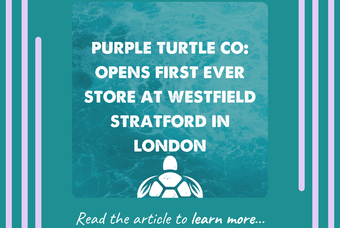


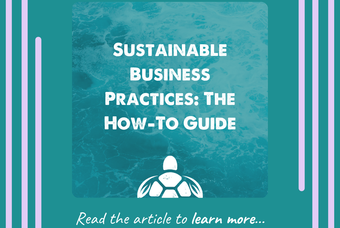

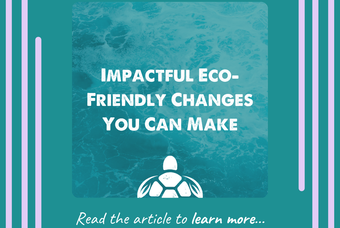
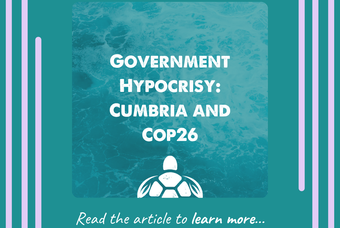
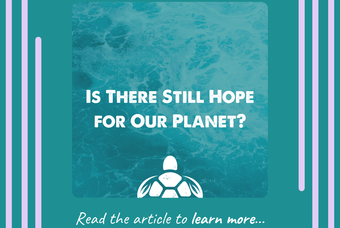
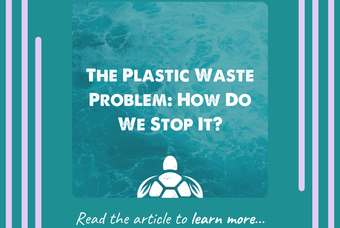

0 comments. Write a comment